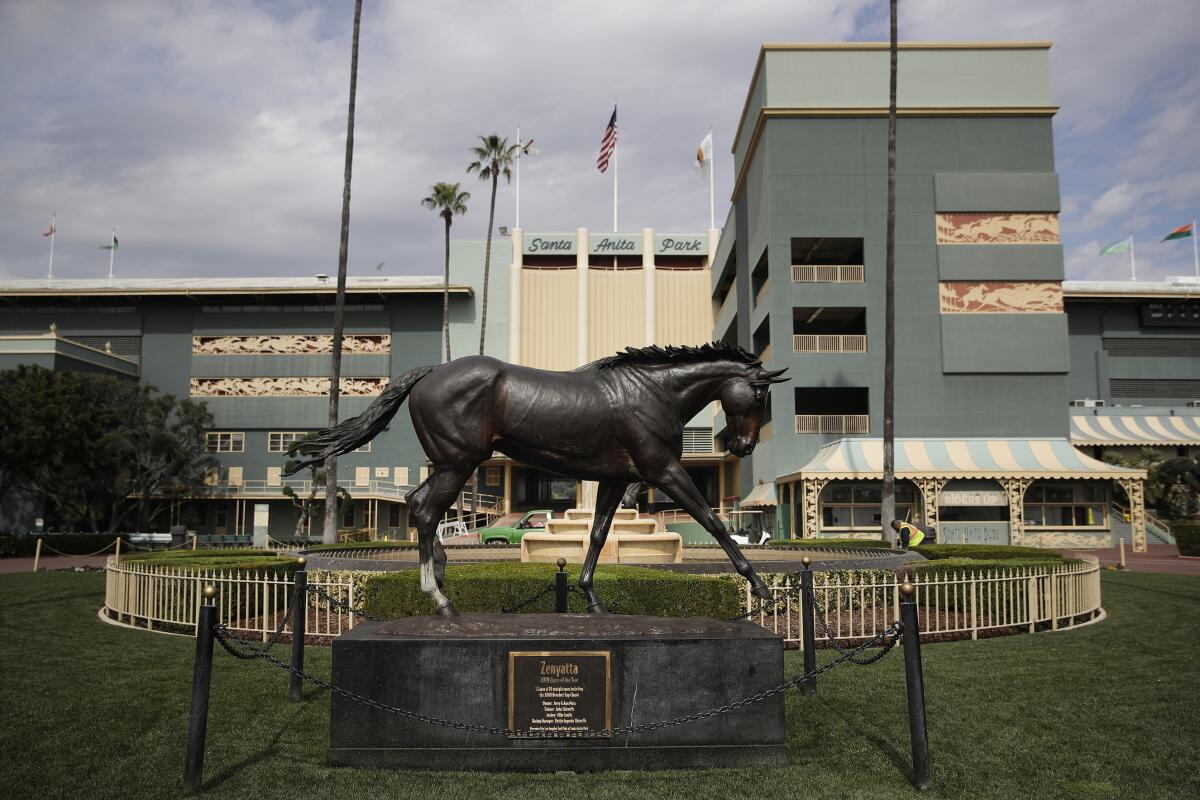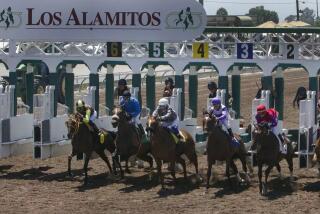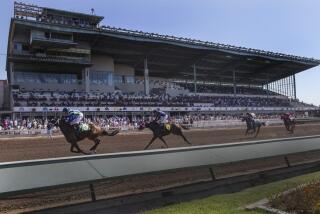CHRB investigation finds no smoking gun in Santa Anita horse deaths

The California Horse Racing Boardâs investigation into the fatalities last year at Santa Anita validated many of the prevalent theories as to why there was a spike in deaths, but found no smoking gun or overriding reason for what happened.
Although the 76-page report did not absolve the track, trainers or the model that drives the sport, it did confirm the long-held belief that most breakdowns resulting in the death of a horse were tied to preexisting conditions. This was the case in 21 of the 23 horses whose necropsies were examined.
New diagnostic equipment has been brought in to Santa Anita but itâs unclear how many of the injuries could have been prevented had the horses been scanned.
âIn general, a lot of the pathology that is preexisting stays asymptomatic even if you could find it with diagnostic imaging,â said Dr. Tim Grande, one of the veterinarians who worked on the investigation.
Dr. Rick Arthur, equine medical director of the CHRB, who also helped write the report, believed that nine of the lesions that eventually led to a breakdown could have been found had the new PET scan equipment been in place.
Overtraining during a horseâs career was cited multiple times as a possible contributing factor to the deaths.
âWeâve known for a number of years that work[outs] per starts are much higher here than in the rest of the country,â Arthur said. âHorses are trained harder and have more high-speed workouts.â
The trainers were criticized for poor record keeping and a lack of knowledge about the anatomy of horses or curiosity about necropsies. Also found were several cases of program training, a practice in which someone other than the licensed trainer was overseeing the training of a horse.
âOne of the most disappointing aspects is how few trainers had reviewed their necropsy reports before sitting down with [investigators],â Arthur said.
He added that knowledge of anatomy might become a bigger part of gaining a trainerâs license.
The California Horse Racing Boardâs report on the horse deaths at Santa Anita during the race meet that started on Dec. 26, 2018
As the result of the investigation, the board plans to investigate seven instances of improper record keeping by trainers and three of license violations.
The report suggested that Santa Anita âshould continue to consider replacing the dirt track with a synthetic surface,â because it holds up better when it rains.
Dr. Greg Ferraro, chairman of the CHRB, did not think the board will mandate synthetics.
âI donât see us mandating it in the near future,â Ferraro said. âBut certainly, synthetic tracks are under consideration. ⌠But, I doubt it would be mandated by the board.â
At the start of last yearâs crisis, Santa Anita brought in Mick Peterson, considered the countryâs leading expert of racing surfaces. At the time he said he could find nothing wrong with the dirt track. The report tells a different story, saying that Peterson told investigators that the âtrack was not consistent due to the complex maintenance decisions made by track managementâ during the heavy rain period.
The report also said that trainers felt pressured by the track to run their horses, although only one trainer could give a specific example, while the claiming system should be overhauled to protect physically compromised horses.
No trainers or horses were named in the detailed analysis of each death, citing state confidentially statues, however the date of each incident made it clear which horse was being detailed.
Trainers Jorge Navarro and Jason Servis are named in alleged scheme to give horses PEDs. Maximum Security was one of those horses.
There were 16 key findings, many a curation of data from necropsies. The study was confined to the 23 deaths between Dec. 30, 2018, and March 31, 2019. Seven more horses died during the trackâs winter/spring meeting. When the track reopened for its one-month fall meeting there were seven deaths, including Mongolian Groom in the Breedersâ Cup Classic, the biggest race of the year for older horses.
This year there have been nine fatalities, compared to 21 to this date last year. However, Santa Anita is running fewer races and has a smaller horse population.
âThere has been a 64% reduction in catastrophic injuries at Santa Anita Park this year, and we have not had a single fatality during racing on our main track for the entirety of this season,â The Stronach Group, owner of Santa Anita, said in a statement. âWhile the first number represents a positive development, the second number is always the goal.â
The CHRB report outlined 47 recommendations, 12 of which are already in the regulatory pipeline process. Most dealt with establishing protocols for training, racing and when to cancel racing, moving toward digital record keeping and transparency in medical records.
It also asked for an examination of how use of the riding crop, or whip, and breakdowns could be related and cited two instances where use of the whip might have been a contributing factor: Derby Treasure and Princess Lili B.
âThe long-term goal of the board is to follow up on the recommendations,â Ferraro said.
The report comes a day after the industryâs credibility came into serious question after a federal investigation cited systematic and widespread doping of horses. The indictments named 27 trainers, veterinarians and drug distributors in the probe, including well-known trainers Jason Servis and Jorge Navarro, both at Gulfstream, which is owned by The Stronach Group.
No California-based trainers were named in the indictment and California was not a state listed where the alleged doping took place. However, Rick Baedeker, executive director of the CHRB, said Tuesday the board has launched an investigation into any California involvement.
Servis was the trainer of Maximum Security, who in a recent poll was voted the top horse in the world after winning the $20-million Saudi Cup. The horseâs owners, Gary and Mary West of San Diego, on Tuesday moved Maximum Security from Servisâ barn to Bob Baffert at Santa Anita.
TSG will not allow Servis or Navarro to enter horses at any of its racetracks until the matter is resolved.
More to Read
Go beyond the scoreboard
Get the latest on L.A.'s teams in the daily Sports Report newsletter.
You may occasionally receive promotional content from the Los Angeles Times.











